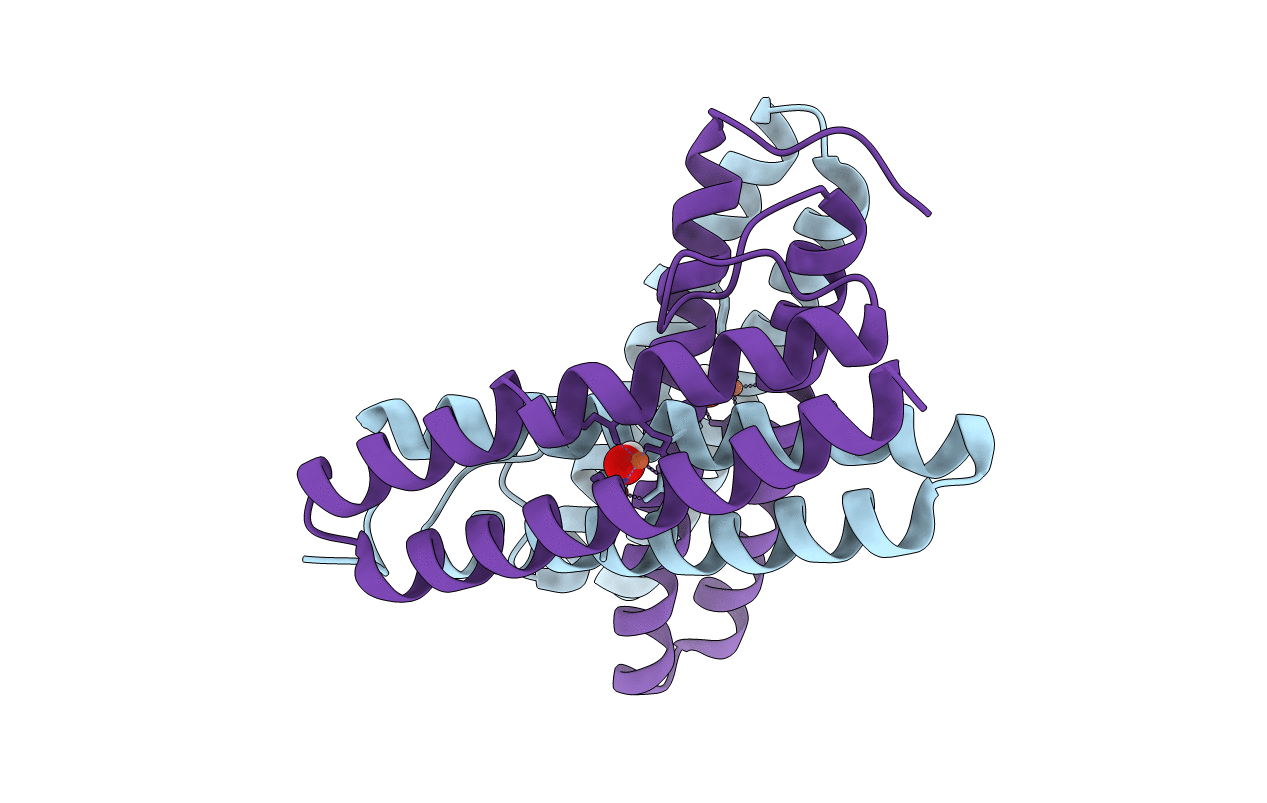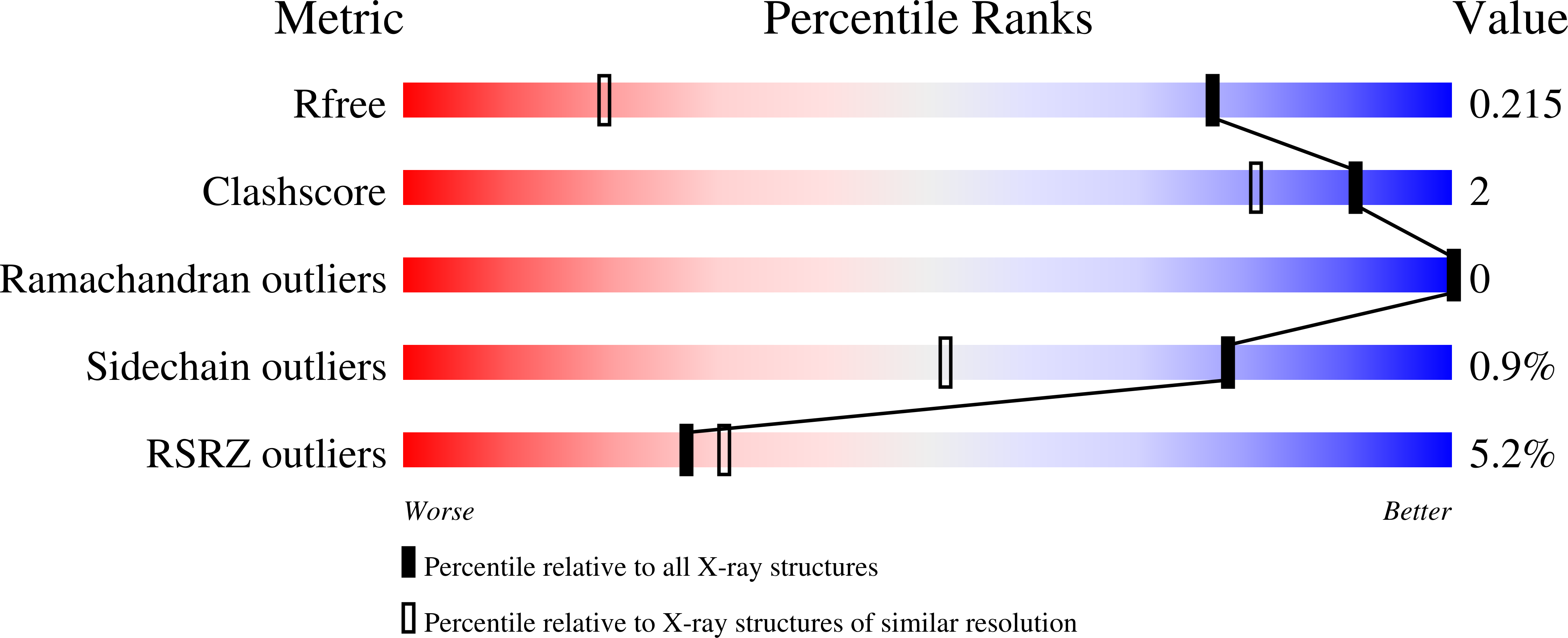
Deposition Date
2021-09-15
Release Date
2022-06-08
Last Version Date
2024-01-31
Entry Detail
PDB ID:
7PPU
Keywords:
Title:
Structure of diFe-Sulerythrin at 0.57 MGy total absorbed dose
Biological Source:
Source Organism:
Sulfurisphaera tokodaii str. 7 (Taxon ID: 273063)
Host Organism:
Method Details:
Experimental Method:
Resolution:
1.34 Å
R-Value Free:
0.21
R-Value Work:
0.18
R-Value Observed:
0.18
Space Group:
P 63


